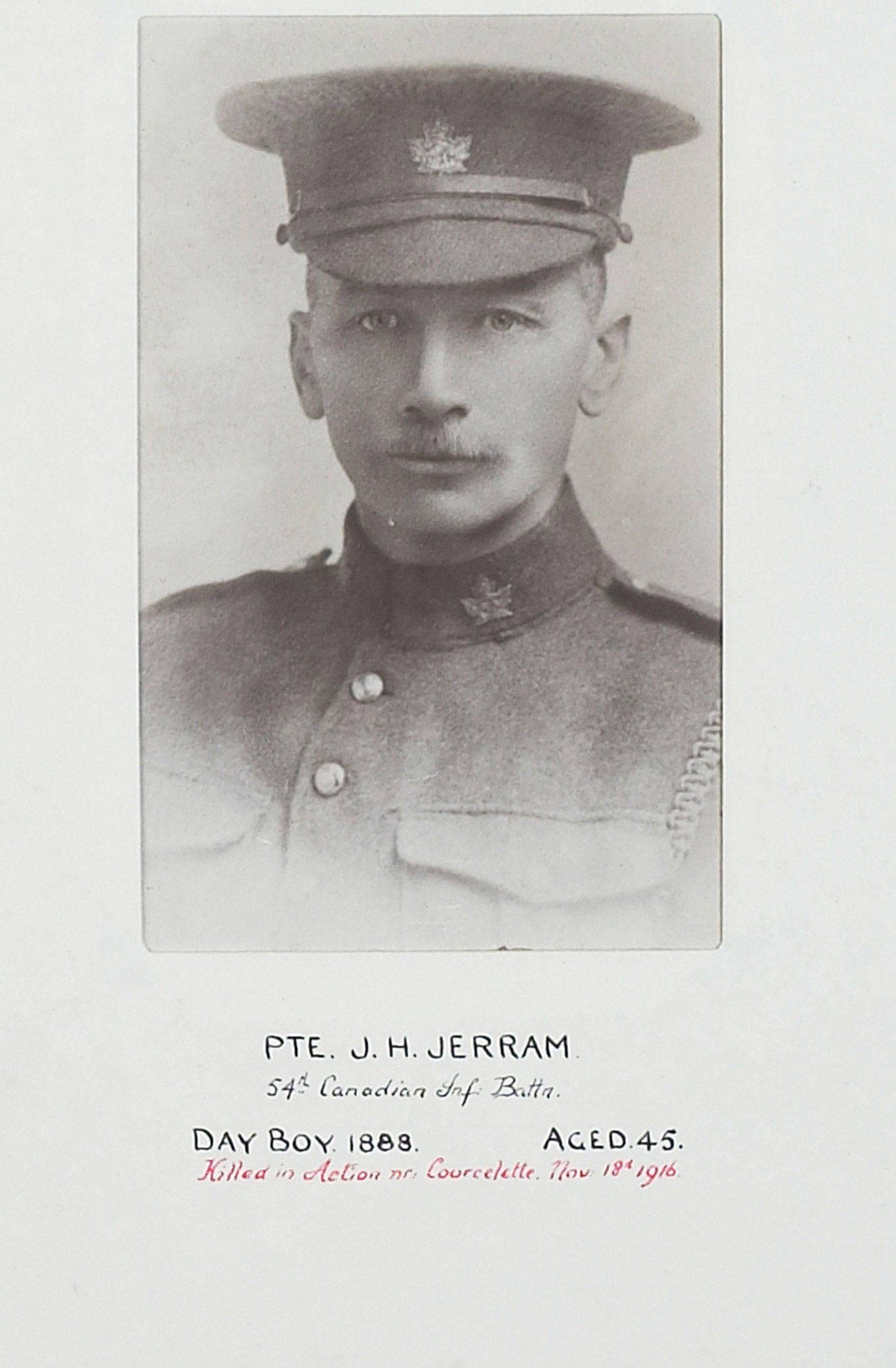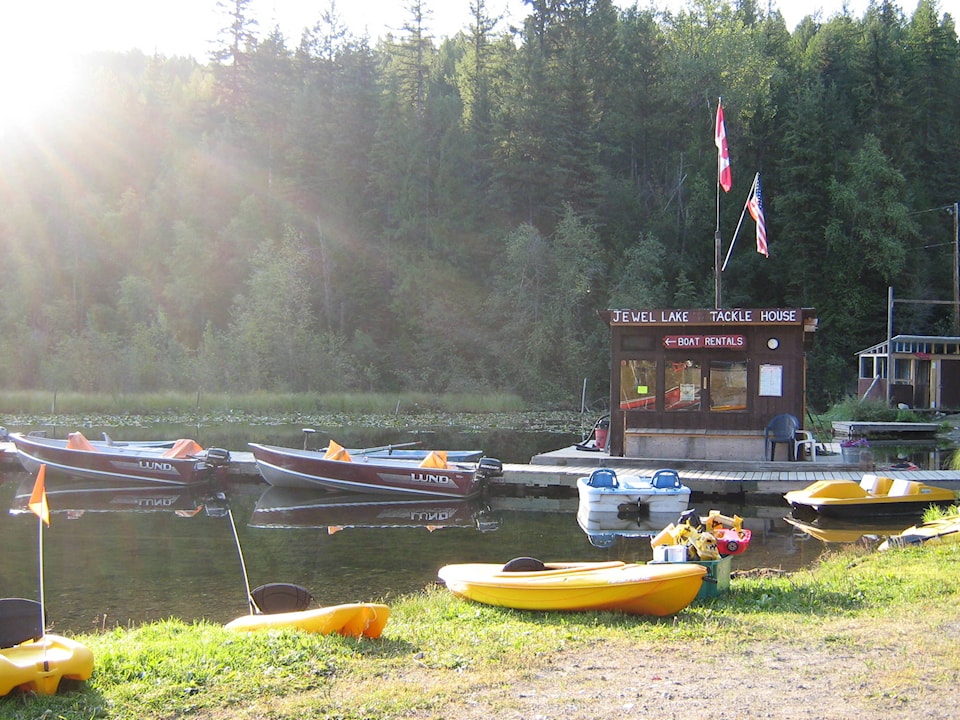Two hundred twenty-seventh in a series on West Kootenay/Boundary place names
Jewel Lake, near Greenwood, was originally called Long Lake. It was first mentioned in the Midway Advance of May 13, 1895 after prospectors Bosshart and Dittmer located the Gold Drop and Jewel mining claims: “Some three miles up Granite creek lies Long lake, and it is on the east side of this lake this new el dorado has been found.”
On Feb. 17, 1898, Randolph Stuart obtained a Crown grant for Lot 860, on the lake’s south and west sides. Arthur Norris Pelly (1864-1950), an aristocratic Englishman involved with local mines bought some of this land the following year.
In the 12th report of the Boundary Historical Society, Gladys Floyd writes: “In December 1899, Mr. Pelly subdivided his property and created Long Lake townsite. He must have visualized a substantial community for the area as a result of the local mining activity.”
Nothing much came of the townsite, but as of 1920, Pelly, along with Gilbert Mahon and a Mr. Hill, were delinquent in taxes on several city lots. Mount Pelly, which overlooks the lake, was named after him in 1922.
The name of the body of water changed to Jewel Lake in the mid-1920s. The earliest reference is in the Greenwood Ledge of July 21, 1927: “For instance as a beauty spot the north end of Jewel Lake cannot be beaten …”
Jewel Lake was officially adopted as a place name in 1955. Granite Creek, at the lake’s south end, was officially renamed Jewel Creek in 1959. Jewel Lake Provincial Park was created in 1981.
JACKSONVILLE
This spot was somewhere on Lost Creek, which flows into the south fork of the Salmo River.
It was mentioned in the Spokane Spokesman Review of Sept. 3, 1895: “D.J. Jackson has taken the initiatory steps toward pre-empting 320 acres of land in the valley along Lost creek, at the foot of Iron mountain, and has a erected a log home, dug a well, etc. This point has been dubbed by the boys ‘Jacksonville,’ and being a central point, will in future be referred to by that name.”
David John Jackson (1843?-1917) filed his Crown grant application on Sept. 20, 1895 but it was never issued. When the Lost Creek Development Co. incorporated on March 9, 1897, it gave its headquarters as “Jackson, BC and New York City.” A stockholders meeting was called that month at the office of Dawson & Archer (John Dawson was the company secretary) in New York. The 1900-01 directory of BC mining companies listed the company’s head office as New York and its registered office as Nelson, but nothing more was heard of its activities.
David Jackson died in New Westminster. His obituary in the Vancouver Daily World didn’t mention his time in the Kootenay, but said he was “an old-timer in this district, having come to the coast 30 years ago from Ontario.” He was survived by two sons and a daughter.
Jacksonville showed up again decades later, in the Trail Daily Times of July 22, 1940, which mentioned “The Trail polling division was described as including the entire city of Trail, Casino, Jacksonville, Shavers Bench and Sunningdale areas.” They probably weren’t talking about the same place, but where was this Jacksonville? It’s a mystery. Annable was formerly known as Jackson’s Siding, but the name had long fallen out of common use.
JERRAM’S LANDING
This sternwheeler stop opposite Harrop on Kootenay Lake’s North Shore was on the CPR timetable by June 1913. It was named for John Henry Jerram (1871-1916), who was born in London to John Henry Sr. and Fanny Jerram. In 1888 he went to work in the head office of the National Bank of Ireland, but when his health failed in 1904, the bank sent him to South Africa to recuperate.
Two years later, he came to BC and bought property on Kootenay Lake. The 1910 civic directory listed him as a rancher at Kokanee in partnership with a man named Whittock. He sold some of his land to the Fox brothers, who started a jam factory in their house, later to become the Kootenay Jam Co. of Nelson. Jerram sat on the board of directors. In 1914 he also sold land to Leslie Wightwick, for whom Wightwick Road is name.
In May 1915, Jerram enlisted with the 54th Kootenay Battalion for the First World War. In August 1916, his unit crossed into France and became part of the 11th Canadian Infantry Brigade, which took part in an advance on the Somme. On Nov. 18, 1916, the final day of the battle, Jerram was hurt in the leg. His wound was bound and he headed for a dressing station, but never made it.
He was initially reported wounded, then missing, then presumed dead, then killed in action. His body was recovered and buried in the military cemetery near Courcelette, France. His grave marker reads Sic itur ad astra — “Thus one journeys to the stars.”
According to an online biography of Jerram, “Letters from officers and men of the Battalion show the respect in which he was held and tell of the spirit in which he faced the hardships of his life in the ranks, never grumbling, and ‘always ready to do anything for anybody.’”
The name of his Kootenay Lake landing is no longer in use.

